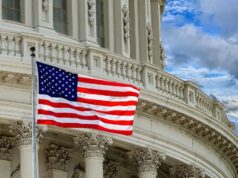As Bitcoin continues to gain global recognition, the debate over its viability as a reserve asset has intensified. While private institutions and some governments have started to embrace digital currencies, central banks remain divided. The Czech National Bank (CNB) has emerged as an unexpected proponent of Bitcoin, exploring adding the cryptocurrency to its reserves. Meanwhile, the National Bank of Poland (NBP) firmly rejected any such consideration, citing fundamental concerns over financial stability and security. The stark contrast between these two neighboring economies reflects broader uncertainties surrounding Bitcoin’s role in sovereign financial strategies.
Czech Republic: A Bold but Uncertain Experiment
The Czech National Bank’s governor, Aleš Michl, has proposed allocating up to 5% of the bank’s €140 billion reserves to Bitcoin. The motivation behind this proposal is diversification. Proponents of the proposal argue that Bitcoin could act as a hedge against inflation and monetary devaluation, much like gold. This consideration is particularly significant as the Czech Republic, a country with a historically conservative monetary policy, has been hesitant to engage with cryptocurrencies on a regulatory level.
>>> Read more: Czech Republic Embraces Bitcoin with New Tax Exemption
Despite the potential upside, the CNB’s plan is far from finalized. Internal debates within the bank indicate strong resistance from conservative policymakers who view Bitcoin’s volatility as a major risk. Additionally, the lack of clear regulatory frameworks for sovereign crypto holdings adds another layer of uncertainty. While the proposal has intrigued the crypto industry, it remains to be seen whether the CNB will move forward with the plan or ultimately abandon it in favor of traditional assets.
Poland’s Firm Rejection: Stability Over Innovation
On the other side of the debate, the National Bank of Poland has taken an unequivocal stance against Bitcoin as a reserve asset. NBP Governor Adam Glapiński stressed that central bank reserves must remain secure and stable. In his view, this disqualifies Bitcoin. The Polish central bank maintains that reserve assets should consist of traditional, well-established stores of value such as gold, the U.S. dollar, and the euro.
The primary concerns driving Poland’s rejection of Bitcoin include:
- Volatility: Bitcoin’s price swings are unpredictable and could introduce instability into national reserves.
- Security Risks: Unlike traditional reserves held in trusted financial institutions, Bitcoin requires robust cybersecurity measures to prevent theft or loss.
- Regulatory Uncertainty: The absence of a clear global framework for central bank crypto holdings makes Bitcoin a risky choice.
Given Poland’s conservative economic policies and strong alignment with European financial governance, the country’s rejection of Bitcoin aligns with broader EU sentiments.
The Broader European Perspective
Poland’s rejection of Bitcoin and the Czech Republic’s cautious exploration of it reflects wider European debates regarding digital assets. European Central Bank (ECB) President Christine Lagarde has dismissed Bitcoin as a viable reserve asset. She stated that it lacks the fundamental stability required for central bank holdings.
ECB policymakers argue that Bitcoin remains speculative, is prone to manipulation, and does not fulfill the core functions of a reserve currency. Furthermore, as the European Union continues developing its regulatory stance on digital assets, including the Markets in Crypto-Assets (MiCA) framework, Bitcoin remains outside the realm of accepted reserve assets.
Conclusion: A Precedent in the Making?
While the Czech Republic’s contemplation of Bitcoin as a reserve asset is an intriguing development, it remains uncertain whether the country will proceed with such a plan. Poland’s firm rejection reflects the broader hesitancy among European central banks. It reinforces the argument that Bitcoin is not yet mature enough to be a part of sovereign reserves.
>>> Read more: Bitcoin Government Reserves: Weighing the Risks and Rewards
The divergence between these two nations highlights the ongoing struggle between financial innovation and economic stability. If the CNB proceeds with its Bitcoin experiment, it could set a precedent for other nations willing to challenge conventional reserve policies. However, for now, the weight of the European financial system remains against Bitcoin’s inclusion in national reserves.
Readers’ frequently asked questions
Why do central banks prefer gold over Bitcoin as a reserve asset?
Central banks prefer gold over Bitcoin as a reserve asset because gold has a long history of stability, global acceptance, and proven value retention. Gold has been used as a store of value for centuries. Its price movements are relatively stable compared to Bitcoin, known for extreme volatility. Additionally, gold has a well-established market with deep liquidity. Central banks can buy or sell large amounts without causing drastic price swings. Another key reason is security. Gold is a physical asset that can be stored in secure vaults, while Bitcoin requires digital security measures that introduce risks such as hacking or loss of private keys. Lastly, virtually all central banks worldwide recognize and hold gold. Bitcoin, on the other hand, remains controversial and is not backed by any government or regulatory body.
If Bitcoin is decentralized, how can a central bank legally own and control it?
Bitcoin’s decentralization means that no single entity controls the network. However, that doesn’t prevent a central bank from owning Bitcoin in the same way that individuals or institutions do. If a central bank wants to hold Bitcoin as a reserve asset, it would need to acquire it through regulated exchanges or over-the-counter (OTC) markets, just as private investors do. Once acquired, the bank would store the Bitcoin in a secure digital wallet, most likely using cold storage to prevent cyber threats. However, legal and regulatory considerations come into play. Many governments have yet to establish clear policies on how central banks can hold or use cryptocurrencies. This is one reason why most central banks, including the European Central Bank (ECB), remain hesitant to integrate Bitcoin into their reserves.
Would a central bank buying Bitcoin affect how cryptocurrencies are regulated?
If a central bank were to hold Bitcoin in its reserves, it could influence future cryptocurrency regulations. Currently, Bitcoin is treated differently across jurisdictions. Some countries regulate it as a commodity, others as a currency, and some have banned it altogether. If a respected central bank, such as the Czech National Bank, were to adopt Bitcoin as part of its reserves, it could push regulators to develop clearer legal frameworks for how governments and institutions handle cryptocurrencies. This could lead to more defined rules on taxation, ownership, and reporting requirements for Bitcoin held by institutional investors. However, given the European Central Bank’s strong stance against Bitcoin as a reserve asset, it is unlikely that any single country’s decision would immediately change the broader EU regulatory landscape.
What Is In It For You? Action Items You Might Want to Consider
Watch for Policy Shifts in Central Banks’ Stance on Bitcoin
If the Czech National Bank (CNB) moves forward with its Bitcoin reserve plan, it could signal a broader shift in institutional adoption. Keep an eye on official statements from central banks, particularly in Europe. Any change in sentiment could influence market confidence and BTC price movements. Traders should track how policymakers respond to the CNB’s considerations. If other central banks start discussing Bitcoin as a reserve asset, it could act as a bullish indicator.
Stay Alert to Bitcoin Volatility During Regulatory Debates
Bitcoin’s price is sensitive to institutional decisions, especially when regulators or central banks weigh in. If Poland’s firm rejection reinforces the European Central Bank’s stance, it could contribute to short-term market dips. On the other hand, if the Czech Republic or another nation advances with Bitcoin reserves, sentiment could shift. Traders should stay agile, setting alerts for key news updates and preparing strategies for both breakout opportunities and potential downside risks.
Diversify and Hedge Against Regulatory Uncertainty
With central banks showing mixed attitudes toward Bitcoin, regulatory uncertainty remains high. If you’re trading Bitcoin, consider hedging your positions with stable assets like gold-backed tokens or fiat-pegged stablecoins. This can help manage risk if negative regulatory developments lead to price corrections. Likewise, monitoring BTC’s correlation with traditional reserve assets—such as gold and foreign currencies—can provide insight into potential macroeconomic trends affecting crypto markets.










